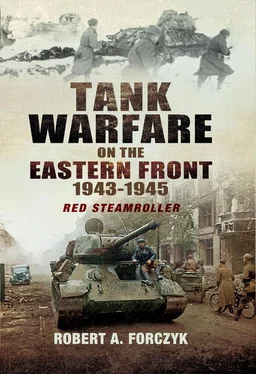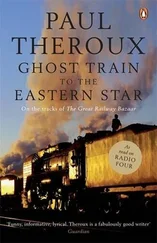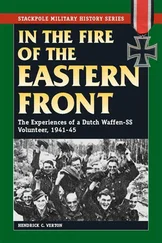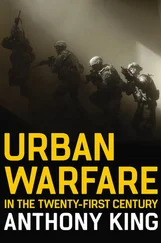The German Panzer-Divisionen on the Eastern Front were regularly plagued by shortages of spare parts for tanks, as well as wheeled vehicles. Over 1,000 panzers were awaiting repair at the start of 1943. One root cause of these shortages was the lack of standardization, resulting in trying to operate equipment from multiple manufacturers and countries – this was a severe problem in the 1941 campaign. Yet by 1943 virtually all of the Czech-made Pz 38t tanks and French-made trucks were gone, and there were usually adequate amounts of Pz III and Pz IV spare parts reaching the front. Many of the inoperative tanks would be repaired, once the overworked repair units were able to focus on something other than retreating. However, the introduction of the Tiger and Panther complicated the spare parts situation again. First, the Heereswaffenamt (Army Weapons Department) had ordered very few spare parts for the two new tank models, instead preferring to concentrate on production. Consequently, the schwere-Panzer-Abteilung received only one spare engine and one spare transmission for every ten Tiger tanks. {20} The spare parts situation with the Panther was also quite severe in mid-1943, when faulty components such as the fuel pump malfunctioned more frequently than expected. Normally, it is best not to commit a new weapon system into battle until an adequate stock of spare parts can be accumulated at the front, but Hitler pressured the OKH into prematurely sending both tanks into combat. Nor did it help that the Tiger and Panther used different size road wheels and track, as well as different engines, transmissions and armaments than the Pz III and Pz IV tanks, so the possibility of using any existing parts was almost nil. Taken together, the spare parts crisis hit the new tank models the hardest in 1943, ensuring lower-than-expected operational readiness rates, while the proven Pz IV had a relatively stable logistical pipeline in place.
After three years of operating well below capacity, the Third Reich finally got serious about increasing its tank production output after the reality of the Stalingrad debacle began to sink in. Prior to Stalingrad, in September 1942, Hitler had ordered production of tanks and Sturmgeschütz (assault guns) tripled from 380–400 units per month over the next two years, which was rather a leisurely build-up. Yet once the 6.Armee was surrounded at Stalingrad and the relief operation had failed, it became increasingly clear to even Hitler and his inner circle that Germany was facing a real crisis and needed to quickly restore its combat power on the Eastern Front as well as preparing for the increased likelihood of a Western Front.
On 22–23 January 1943, Hitler met with Reichsminister für Bewaffnung und Munition Albert Speer, who had gained his position after the death of the less-than-efficient Fritz Todt in February 1942. Hitler now ordered Speer to increase the production of Armoured Fighting Vehicles (AFV) five-fold by the end of 1944. The so-called ‘Adolf Hitler Panzer Program’ that Speer hastily developed called for a monthly production quota of between 1,100 AFVs by early 1944 and 2,000 or more by the end of the year. Yet in January 1943, German factories still built only 248 tanks, including 35 Tigers and 163 Pz IV medium tanks, plus 130 assault guns and 140 tank destroyers; a total of 518 AFVs. In contrast, Soviet industry built 1,433 tanks in January, including 1,030 T-34, plus 57 self-propelled guns. The main German tank, the Pz IV Ausf G, was being out-built 6–1 by its main competitor, the T-34; this production imbalance handicapped the Panzer-Divisionen on the Eastern Front since they were always fighting at a huge numerical disadvantage.
Speer was not without talent, but as economic historian Adam Tooze has noted, his highly-touted ‘production miracle’ was part propaganda and unsustainable improvisations. {21} The two levers that determined German tank production output were the availability of labour and steel, which were both constrained resources in the Third Reich’s wartime economy. Speer was able to temporarily get more steel for the Adolf Hitler Panzer Program, but as Tooze notes, this still only amounted to 15 per cent of the steel allotted for German armaments production; instead, the lion’s share of the monthly steel allotment went to ammunition and aircraft production. Speer was also able to get forced labor from the occupied countries. In 1941, there were fewer than 50,000 employees working in the entire German tank industry and its sub-contractors, but this was increased to 160,000 in late 1943. One-third of the new workers were low-skill and unmotivated foreign workers. {22} Furthermore, Germany’s industrial priorities kept shifting between aircraft, ammunition, tanks, U-Boats, the Atlantic Wall project and other flavour-of-the-month projects like the V-2 rocket, which made it difficult to establish consistent levels of output. Shortages of copper and rubber also made it difficult to increase tank production; Germany imported most of its copper and a large percentage of it went for ammunition production, but each Pz IV required 195 kg of copper. {23} Likewise, tanks needed rubber for their road wheels and by 1943, German factories were forced to make a new type of roadwheel that used 50 per cent less rubber; it worked, but it was noisier and wore out more quickly. {24} Speer had Hitler’s full backing in centralizing Germany’s armaments industry and increasing AFV production. An easy decision, taken late in 1942, was to terminate Pz III production and instead have the Alkett factory focus exclusively upon StuG III Sturmgeschütz production. By early 1943, Speer’s organizational reforms were beginning to bear some fruit as German tank and assault gun production slowly began to increase, but it would be March before Pz IV monthly production broke the 200-mark and October before it went over 300. Guderian cooperated closely with Speer in trying to increase German tank production and both realized that the only efficient way for Germany to narrow the gap with Soviet tank output was to focus on one or two proven designs. Guderian favored focusing on boosting Pz IV production to at least 400 per month and delaying the introduction of the Panther until it was thoroughly tested and its technical defects remedied. He was ignored.
Hitler respected Guderian, but had limited tolerance for his brash opinions. On the other hand, Dr Ferdinand Porsche, who had developed the Volkswagen in 1936, had Hitler’s ear – even though that project had only been a propaganda success. {25} Porsche not only joined the Nazi party, but the SS as well, and Hitler recognized him as a ‘great German engineer’. Once the war began, Porsche sought ways to contribute to the military effort – and to stay in Hitler’s inner circle – so he connived to get himself appointed as Hauptausschusses Panzerwagen und Zugmaschinen , in charge of managing tank production – but he was a dismal failure. Next, Porsche decided to try his hand at designing tanks, despite the fact that he had no technical experience at all in designing armoured vehicles. Porsche developed his concepts of tank design from his imagination, not from practical requirements based upon combat experience or the needs of front-line tankers. Indeed, Porsche was particularly enamoured of gargantuan-size tanks, even though these were inconsistent with the German Army’s Bewegungskrieg manoeuvre doctrine – of which he was ignorant. However, what Porsche lacked as a tank designer, he made up for as a sycophant, being able to convince Hitler that his ridiculous projects deserved priority.
The three largest German tank manufacturers in terms of total output in 1943 were the Nibelungenwerke in St Valentin, Austria, VOMAG in Plauen, Saxony and the Krupp-Grusonwerk in Magdeburg. These three plants employed about 9,000 workers and built 52 per cent of Germany’s tanks in 1943. However, the largest manufacturer of AFVs was Alkett in Berlin, which had 3,500 employees and built over 2,000 assault guns in 1943. Altogether, seven German firms with about 25,000 employees assembled almost all of the tanks, assault guns and tank destroyers for the Wehrmacht. Although skilled workers were a critical bottleneck in expanding tank production, particularly welders and electricians, German industry had far greater access to raw materials than their opposite numbers in Soviet industry. Due to the German conquests of 1941–42, the Soviet Union had lost control over more than half of its critical resources such as aluminum, iron ore and coal. Indeed, the Germans were able to send manganese back from the captured mines at Nikopol and Krivoy Rog, which was used in the production of armour plate for German tanks. {26} Consequently, by 1943 Germany was out-producing the Soviet Union by 4–1 in steel production. The difference was that Germany was also building U-Boats, halftracks and a wide variety of different equipment that the Soviet Union simply opted not to build. Consequently, German industry lost the production battle to Soviet industry in 1942–43 and bears a large portion of the responsibility for the eventual defeat of the Panzer-Divisionen. Why was German tank production decisively out-stripped by Soviet tank production?
Читать дальше








![John Stieber - Against the Odds - Survival on the Russian Front 1944-1945 [2nd Edition]](/books/405234/john-stieber-against-the-odds-survival-on-the-russian-front-1944-1945-2nd-edition-thumb.webp)



